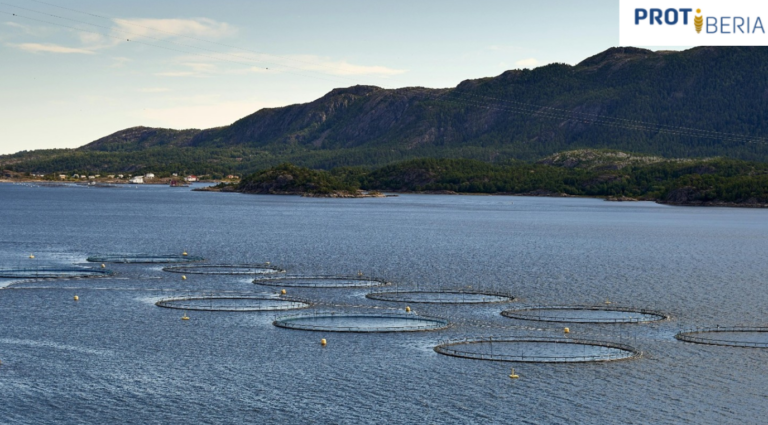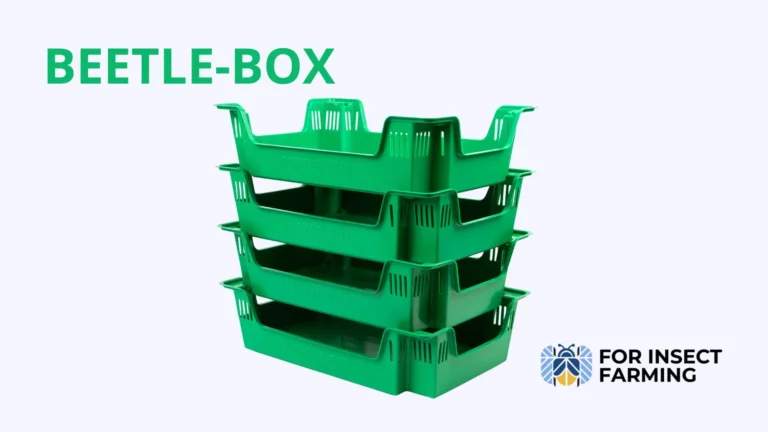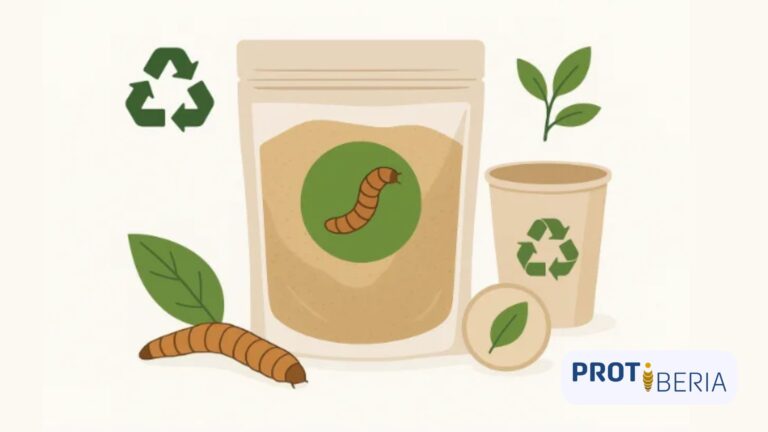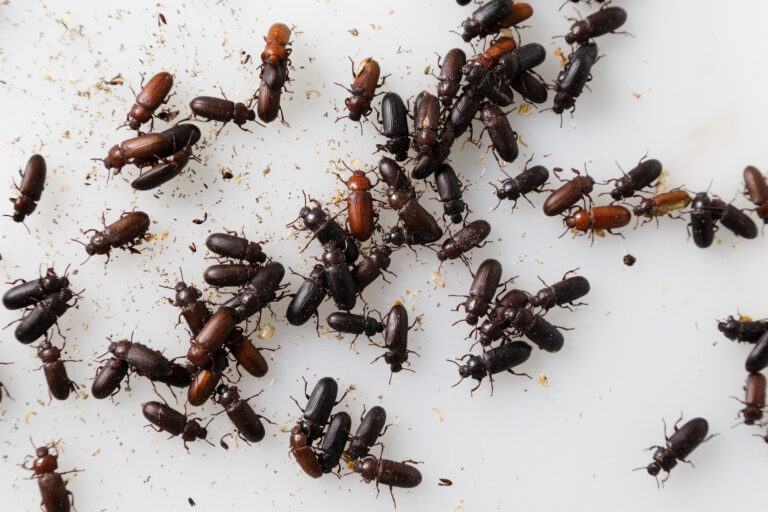| Aquaculture is a sector with a high demand of production, since fish is a source of healthy protein rich in omega-3. Feeding these fish with quality proteins is a role in which Tenebrio molitor can participate, with nutritional characteristics suitable for feeding fish and other farm animals. |
The increase in world population translates into an increase in food production, including fish. This represents an increase in fishing demand and the overexploitation of maritime fisheries with the consequent rise in aquaculture. The aquaculture harvest in Spain in 2020 totaled 47,697 tons, with sea bass, rainbow trout and sea bream being the main species.
FEED IN AQUACULTURE
Fish feeding is a key element of their viability. Optimizing the use of raw materials, the knowledge about nutrients, their digestibility and the correct management of feed are essential for the responsible development of this activity.
The feed ingredients are selected and combined:
- To supply energy and essential nutrients to support fish growth, health and reproduction, as well as product quality.
- Depending on how the physical characteristics of the pellets affect the cost, profitability, physical characteristics and availability of the ingredients.
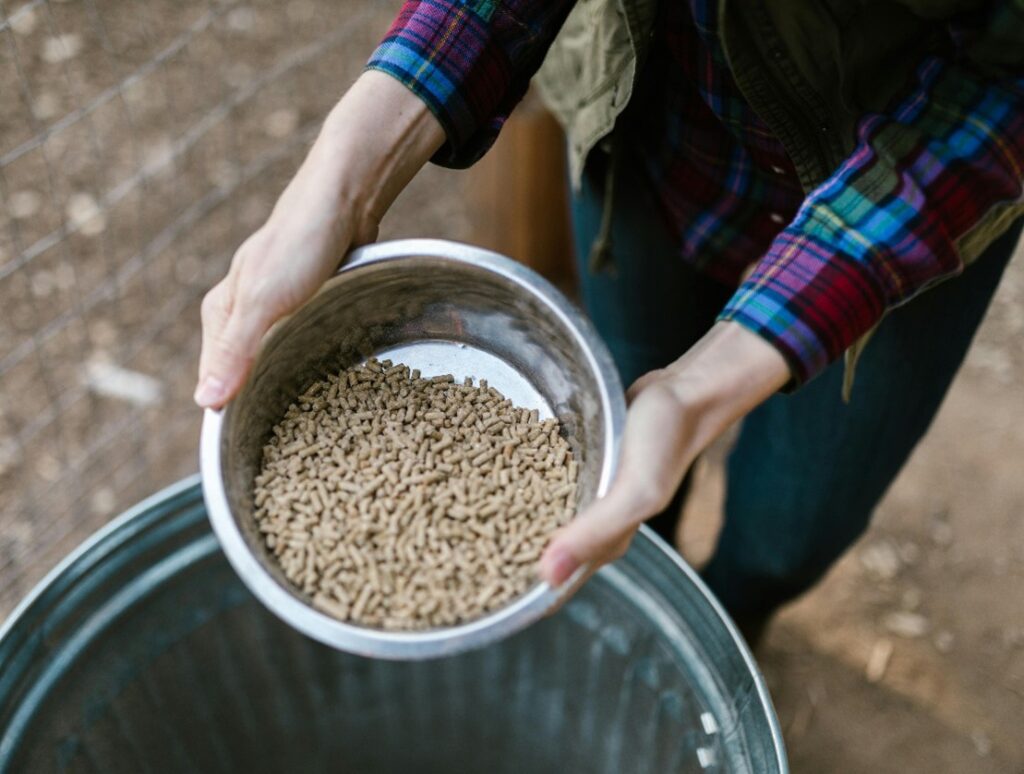
Many feed ingredients are byproducts of human food production, such as soybean meal and corn gluten meal, both byproducts of cooking oil production. Fishmeal, on the other hand, is now produced exclusively for use in animal feed.
The feed ingredients are obtained from:
- Marine resources (fish meal, fish oil)
- Plant seeds (grains, oilseeds, legumes)
- Extracted animal proteins (cougar meal, meat meal, bone meal and blood meal)
- Byproducts of seafood processing
- Unicellular organisms
COMPOSITION OF FEED FOR FISH
Ideally, each ingredient selected as a feed component has a specific role to play in it:
- Protein sources, defined as protein-rich ingredients (>35% crude protein), are selected to supply specific proteins and/or amino acids (fish meal, soy protein, blood meal).
- Oil sources are selected to supply dietary energy and essential fatty acids (fish oil, soybean or rapeseed vegetable oil).
- Starch sources are added to provide dietary energy and act as nutritional binders, as well as allowing the pellets to expand during starch gelatinization (corn starch, wheat gluten).
- Premixes are used in small quantities to supply vitamins and minerals.
- Additives are supplied in small quantities to:
- increase the digestion of specific components of the feed.
- impart color to skin, muscle or eggs.
- alter the physiology of the fish (immunostimulants, prebiotics and probiotics).
- supply essential amino acids.
- increase feed consumption by improving palatability.
- avoid microbial deterioration during feed storage.

TENEBRIO MOLITOR PROTEIN IN FEED FOR AQUACULTURE
The protein component of aquafeed is the most important and expensive dietary component. Pellet feeds have traditionally been based on fishmeal (40-70% of fish diets). Furthermore, there is no realistic prospect of increasing production of this product in the future.
Therefore, the search for new protein ingredients has become a priority need for feed producing companies around the world. All of this, backed by research that has shown that economical feed can be formulated with low levels of fishmeal, complemented with other protein sources.
Studies on the inclusion of Tenebrio molitor in the diet of sea bass, sea bream and trout, show that inclusions up to 100% are compatible with the growth rates, nutritional, organoleptic and sensory quality of the fish.
Tenebrio meal, produced sustainably, has a high nutritional value, highlighting:
- Its content is 60-70% excellent quality protein, which includes the essential amino acids necessary for these farmed fish. Furthermore, it is characterized by its easy digestibility and high palatability.
- It is a valuable source of lipids (15%) with 75% high quality unsaturated fatty acids, among which omega-6 and oleic acids stand out.
- It also contains vitamin B12, minerals (magnesium, zinc, iron) and bioactive components, such as lauric acid, antimicrobial peptides and chitin. The latter stimulates the immune system and has antimicrobial and antiparasitic action.
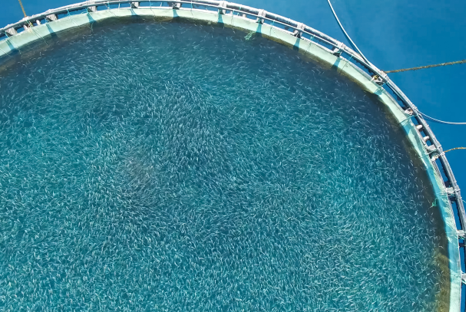
CONCLUSION
The great demand for aquaculture fish, a source of healthy proteins and rich in omega-3, requires a high production of feed, the most important component of which is protein. The protein from Tenebrio molitor is positioned as a promising source due to its nutritional characteristics, as well as sustainability, palatability and immunostimulating effects.
REFERENCES:
– Aquaculture in Spain Report. Aquaculture Business Association of Spain (APROMAR). Cádiz, 2022.
– Gasco, L., Biasato, I., Dabbou, S., Schiavone, A., & Gai, F. (2019). Animals fed insect-based diets: State-of-the-art on digestibility, performance and product quality. Animals, 9(4), 170.
– Henry, M., Gasco, L., Piccolo, G., & Fountoulaki, E. (2015). Review on the use of insects in the diet of farmed fish: past and future. Animal Feed Science and Technology, 203, 1-22.
